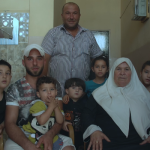SatellitePro ME talked to Riaz Lamak, Programme Lead at Geeks Without Frontiers about what disaster preparedness entails.
 Geeks Without Frontiers (GEEKS) recently hosted a disaster-preparedness programme for an Afghani delegation in the UAE. The SatellitePro ME had a conversation with Riaz Lamak, Programme Lead at Geeks Without Frontiers about what disaster preparedness entails.
Geeks Without Frontiers (GEEKS) recently hosted a disaster-preparedness programme for an Afghani delegation in the UAE. The SatellitePro ME had a conversation with Riaz Lamak, Programme Lead at Geeks Without Frontiers about what disaster preparedness entails.Preparedness for a natural disaster primarily addresses multiple areas, according to Riaz Lamak, Programme Lead at Geeks Without Frontiers (GEEKS). In order to be able to offer on-ground support and communications to people impacted by a natural disaster, they should be aware of what kind of support they can potentially tap into, he explains.
Some of the key points addressed as part of preparedness were emergency licensing procedures; express customs clearance procedures for HADR; best suited technology; pre-positioning; quick installation deployments in terms of geographic vulnerability; spectrum availability; and cybersecurity threats.
A country should be fully prepared when a big natural disaster hits, explains Lamak. If its a big disaster, external agencies like NGOs would like to come into the country and offer help. First, they will come with their comms equipment, such as mobile satellite phones (MSS terminal). They should ideally know beforehand what the emergency licensing procedure is, so that they are able to easily enter the country with their equipment.
Normally, developed countries who plan their disaster response infrastructure consider a number of aspects. For instance, they earmark spectrum and keep aside some resources for their disaster management network. So its important to know what procedures a country has, so that when a disaster hits, the agencies involved are able to kick in with processes immediately.
An unfortunate but common pattern in countries hit by natural disasters is cyber attacks. Lamak remarks that during a specific endeavour in Asia Pacific as part of a recent joint disaster preparedness exercise, he learned how cyber attacks are common during disasters, with hackers using the vulnerability of the area to cause further chaos. As part of the preparedness, therefore, awareness of this and alertness is required.
A third common issue during disasters is when NGOs try to come in with their equipment. Issues at customs can be extremely frustrating.
When everyone is coming in with equipment to support, how does one ensure easy access or get a waiver at customs so one can come and go during that period? Hence, the process and procedure should be pre-defined. All this cannot be done after disaster has already struck.
Lamak says countries typically earmark locations with pre-positioned terminals like satellite phones, VSATs, solar-powered radio sets, etc, such as in the Chief Ministers office, the Prime Ministers office, district-level offices and so on. While these comms terminals are normally used as redundant links, they can be activated for disaster mitigation. Once that challenge has been addressed, they are repurposed for business as usual.
In normal circumstances, a country may use its network for social programmes like telemedicine, tele-education, office communication and so on. During a disaster, you can increase the bandwidth and use this same equipment for disaster relief and mitigation. We must remember that invariably mobility is down and fibre cut, so MSS & FSS satcom terminals are the best tools for first responder communications. Further, it should be remembered that with satellite imagery, we can identify where there has been maximum damage and send relief to those specific places.
Another element taught as part of preparedness is exploring which satellites have a footprint in a specific region. This is a very important step.
We look at which satellite operators have their footprints and can put bandwidth on a specific geography. So we prepare them based on what bands each operator has, whether Ka-/Ku-/C-band, etc, and accordingly plan ground system hardware too. This is preparedness on satellite capacity and ground infrastructure.
The last element is trained personnel.
If you have people trained on how to deploy quickly, connecting and communicating is achievable. This is why human capacity building is so important, explains Lamak.
GEEKS, as a technology neutral expert, works with satellite, fibre, copper, RF, mobile and every other technology available, offering a hybridised technical design for connectivity. It assists nations in preparedness and trains personnel.
Lamak explains that in this particular instance, the aim was to sensitise and train the Afghan team on all of the above preparedness levels. They went through emergency communication licensing and customs clearance procedures, and were offered hands-on experience with various technologies, systems and communication equipment.
















































































